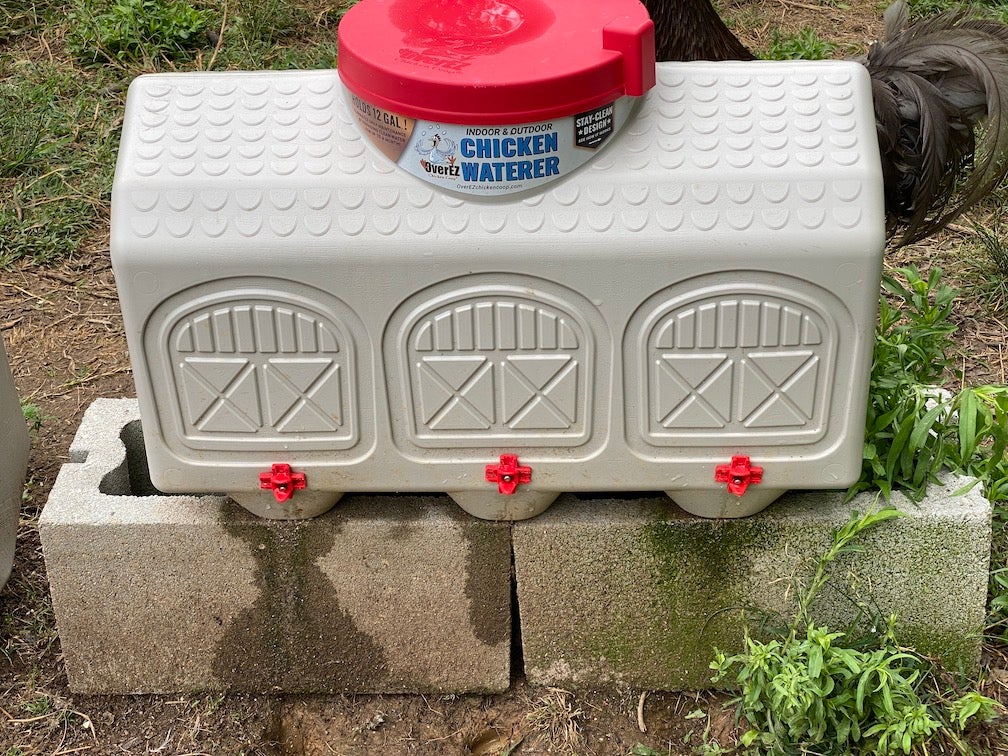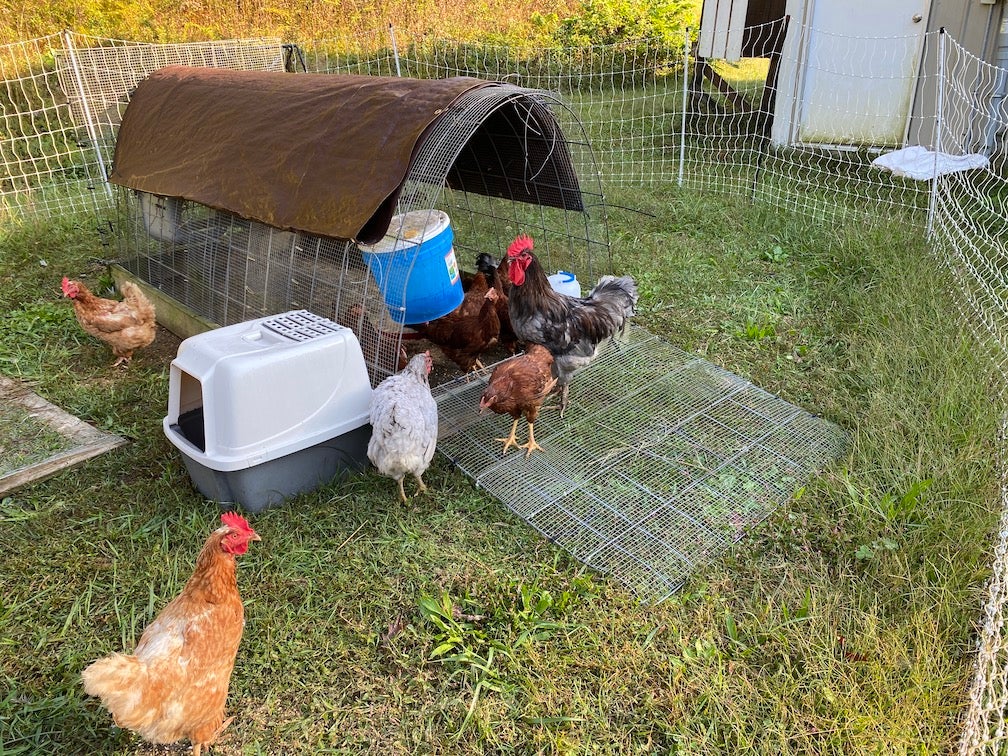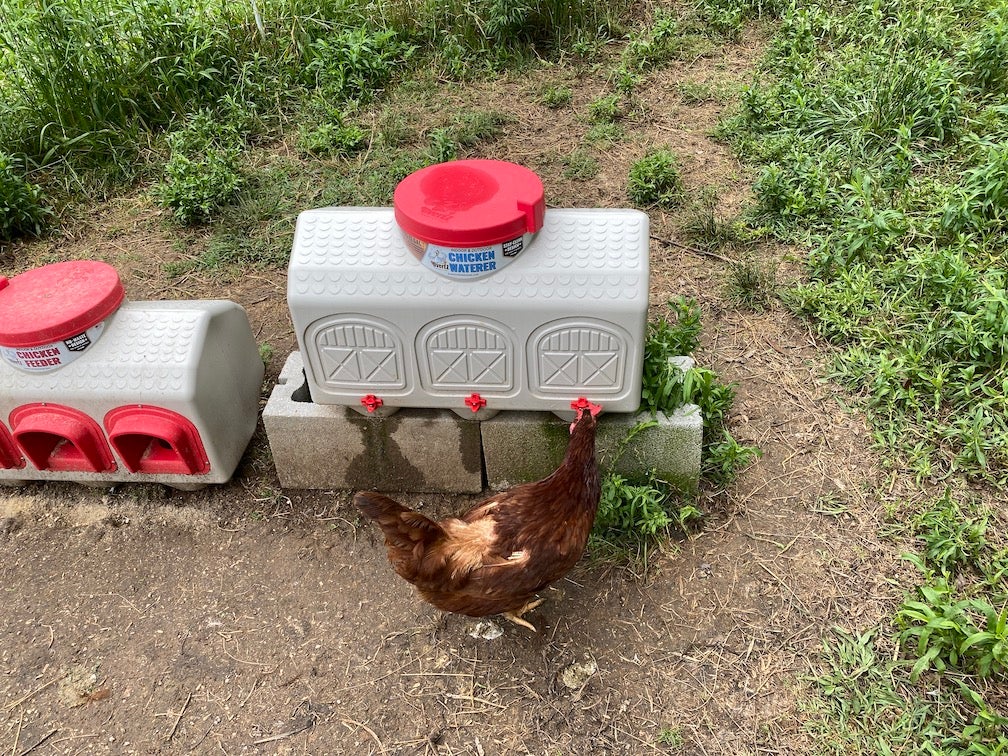Water Systems – Little Giant Hen Hydrator vs OverEZ Chicken Waterer
Josh Centers 05.31.22

Chickens are pretty low maintenance: protect them from predators and the elements, give them food and water, and in return, they give you eggs. Water is a sticky point though. Chickens are also really dumb so they do things like poop in their water. Water also freezes in the winter, and if you’re not careful, it grows algae and mosquitoes. For all those reasons, open water containers are generally a bad idea. So, someone came up with the idea of watering nipples that the chickens peck when they want a drink. The water source itself is closed off so the chickens can’t use it as a port-a-pot. You can buy watering nipples in bulk and turn any bucket or container into a chicken waterer. Or, you can buy a pre-made waterer that has the nipples already installed. I’ve tried out two of these: the Little Giant Hen Hydrator and the OverEZ Chicken Waterer.
Little Giant Hen Hydrator
The Hen Hydrator is a 3.5-gallon bucket with four vertical nipples on the bottom. The vertical nipples point down, so the chickens have to peck up to reach the water. That also means that you have to set the bucket height just right. Too high and the chickens can’t reach it. Too low and they have to twist their necks to get water. A chain can help with this.

You may wonder why you’d spend $25 on this bucket instead of buying a much cheaper bucket and installing your own watering nipples:
- It’s pre-assembled so it saves you time.
- It’s slightly smaller than a 5-gallon bucket, which is actually a good thing since it makes it easier to position in tight spots.
- The Hen Hydrator is a translucent blue instead of a typical opaque bucket, which lets you glance at the water level but keeps algae from growing in the water.
- Unlike most plastic buckets that degrade in the sun, I’ve kept Hen Hydrators outside for years with no signs of cracking.
I’ve been using the Hen Hydrator for a few years now, and while they’re overpriced, they’re a good option to get you started quickly. I’ve never had trouble with algae or other gunk growing in the bucket, but here are a few things you should know:
- The fill plug on the top will get lost quickly. I don’t know why, but they tend to pop off and get buried in chicken poo.
- You should tighten the nipples first thing because they tend to be loose and drip water. I tighten the fittings with Channellock pliers.
- They freeze up in the winter. The best way I’ve found to deal with this is to bring the waterers inside at night and put them in a spare shower. I then refill them and put them back out in the morning. Otherwise, you’ll either have to defrost the buckets or chip out the ice.
- While they last a while, the nipples break occasionally, especially in cold weather, so you should have spare nipples on hand to replace them. They’re cheap and easy to install.
I stuck with the Hen Hydrator for a few years because it works, but one day I spotted something irresistible at Tractor Supply and I’ve found it to be a much better solution.
OverEZ Chicken Waterer
At a retail price of $80 (I paid $60), the OverEZ Chicken Waterer isn’t cheap, but I love this thing. It holds a whopping 12 gallons of water, and has a nice big lid that also has an opening for a water heater for the winter. But the big difference from the Hen Hydrator is the choice of nipple.

While the Hen Hydrator uses vertical nipples the chickens have to reach, which makes placement tricky, the OverEZ uses horizontal nipples, which have several advantages:
- They’re less likely to leak.
- Chickens can reach them easily.
- You can place the OverEZ pretty much anywhere.
Placement is easier, but you’ll probably have to put the OverEZ on a platform to make it easier for the chickens to reach it. I put mine up on a cinder block. The big plus of the OverEZ over the Hen Hydrator is how infrequently I have to fill it. I have about 15 birds and I only have to fill it once or twice a week, even when it’s hot outside. With the Hen Hydrator, I had to refill it at least every other day in the hot months.
I have yet to field test the OverEZ in the winter, but supposedly the horizontal nipples are less prone to freezing up since gravity doesn’t hold the water directly against the nipple mechanism. With the OverEZ, I have the option of using a submersible chicken water deicer to keep the water heated. I prefer to keep my operation as off-grid as possible, and a heater draws too much power to run from a small solar panel, but at least it’s an option.
Choosing the Right Option for You
The Hen Hydrator is a great solution for a mobile pen, like a chicken tractor. You can hang the waterer from the top of the tractor and it’ll move along with the tractor. This is part of why I stuck with the Hen Hydrator for so long because my chickens were primarily confined to a small chicken tractor that I moved every day.
When my chicken population grew so I had to invest in an electric net fence to give them more room, I found myself moving them much less often. After that, the OverEZ chicken waterer made a lot more sense. When I move them every few weeks or so, I wait until the OverEZ is low enough on water for me to pick it up, and I lug it over to the new grazing area. It would also make a lot of sense in a barn or coop.